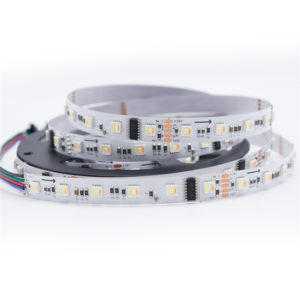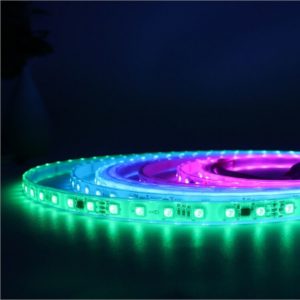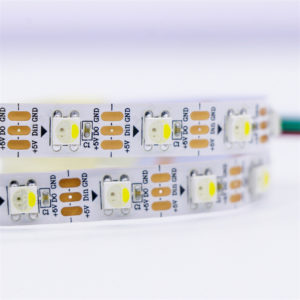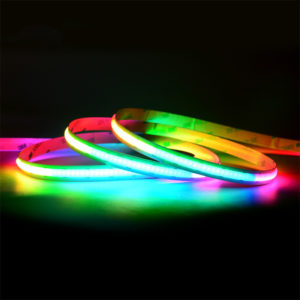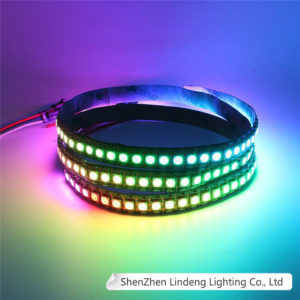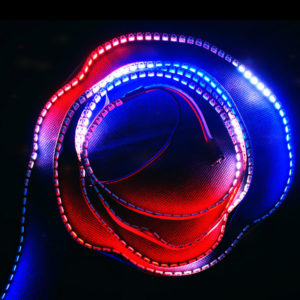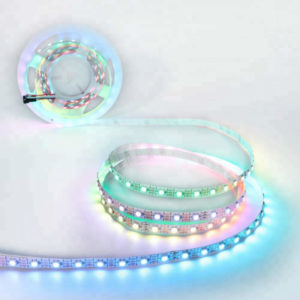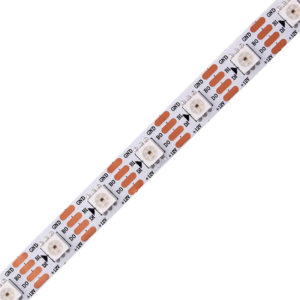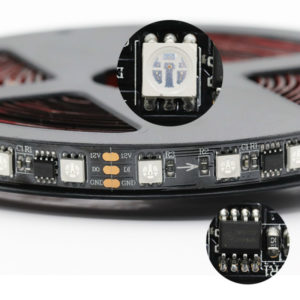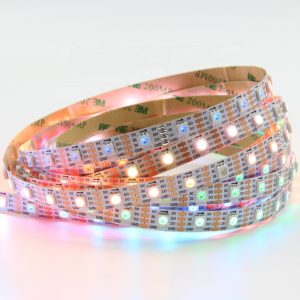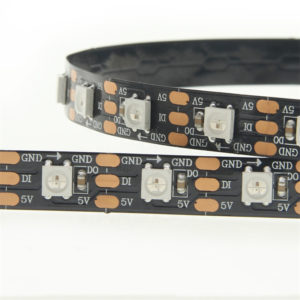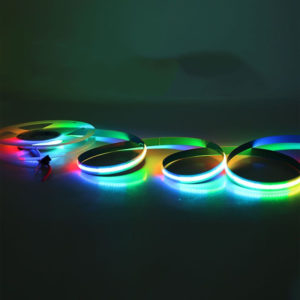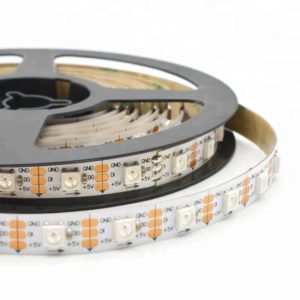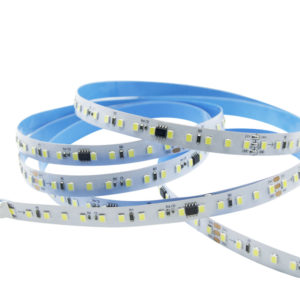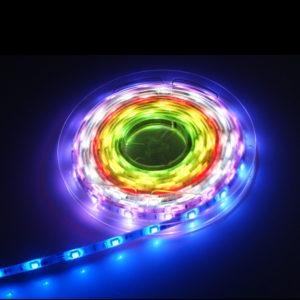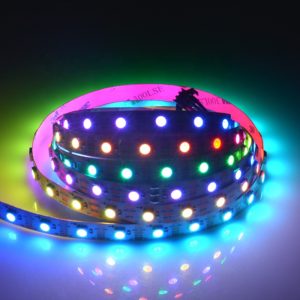Showing all 18 results
-
24V 5050RGBWW 5-in-1 Magic Color LED Soft Light Strip Addressable LED Strip Light RGBCCT
$13.80 -
30leds 60leds ws2811 addressable 5050 RGB flex strip 12V 24V digital rgb LED strip light
$2.80 -
5050RGBW built-in 6812ic LED Magic Light Strip low voltage 5v SMD Programmable Chasing LED Strip Lights
$7.20 -
648leds Per Meter COB RGBW Strip Smart Under Cabinet Addressable RGB LED COB Strip Lights 12V
$10.80 -
96leds/m DMX addressable Dream Color WS2812 LED Strip IP20 IP65 IP67 IP68
$8.20 -
DC5V 43.2W/M Addressable SK6812 rgbw Digital Strip 144 LED Per Meter
$10.80 -
Digital Flexible DC5V Programmable RGB ws2812b LED Strip SMD5050 Magic Dream Color
$5.80 -
Digital individually Addressable RGB 12v WS2815 LED Strip Resume from Break Point
$6.50 -
Digital Tape WS2811 IC 12V 14.4W 60LED 20Pixel RGB 5050 ws2811 LED Strip
$4.60 -
Full Color LED Ring DMX DC5V WS2812B WS2812 Addressable Round Ring Pixel LED Light Strip
-
High Quality 4 in 1 RGBW LED Strip Light 12v 96leds/m LED Tape Wholesale
$7.60 -
Individually Control WS2812b Light RGBW Digital DC5V 60led Pixel Addressable SK6812 RGBW LED Strip
$5.80 -
RGB COB LED Strip smart dream color magic Digital 5V SK6812 Addressable LED Strip
$22.00 -
Smart IC Waterproof LED Pixel Module Injection Mini 3SMD WS2811 RGB LED Pixel Lights
$0.44 -
Top Quality RGB SK6812 5v Digital Led strip, 5050 5M 300LEDs Individually Addressable rgb led strips
$5.80 -
White Chasing LED Strip LED Pixel Light WS2811 600leds Addressable Single Color Flowing LED Strip
$3.20 -
WS2812 Digital LED Strip Light Wifi Wireless Smart Phone APP Controlled Light Strip Kit
-
WS2812B SK6812 APA104 LC8812B 5050 RGB Addressable Color Smart LED Strip Light DC5V
$5.80
Digital LED strips offer endless possibilities
Digital LED strips can be used for a variety of applications, including chasing lights and rainbows. A matrix of LEDs can also be created by placing many LED strips side by side. Such a matrix can be used to project graphics or videos. For such applications, you will need a special digital controller with software (see Accessories > Digital LED strip controllers).
By using this controller, you can specify where each LED strip should be placed, and then project graphics over the array of LED strips.
Digital LED: What is it?
Every digital led has its own driver IC and two data pins. A Digital LED has four pins, two for data and two for power. The Digital LED receives data from the controller IC and passes it to the next Digital LED in the series, using the power in parallel. Most regular LEDs don’t have data pins, and they use series or scanning power connections.
In short, it is also called Addressable RGB LED or ARGB LED based on its characteristics.
Why should use LEDs?
Multiple RGB LEDs can be used simultaneously with digital LEDs. The electronic engineer can save a lot of time by using Digtal LEDs in PCB layout, as well as use fewer ICs by using Digtal LEDs.
The traditional RGB LED has four pins, one for the cathode/anode and three for the R, G, and B circuits.
It will not be an issue if you use few LEDs, but as you use more LEDs, circuit routing becomes more challenging. Scanning is another common scenario when using multiple RGB LEDs. In addition to the complexity of routing, scanning is often used to light up different colors between RGB LEDs. LEDs sometimes blink depending on the scanning frequency.
Due to their built-in driver IC and non-scanning emission, Lumex Digital LEDs overcome these two limitations.
The implementation of Digital LEDs differs from traditional R/G/B LEDs. Initially, the circuits are different. There are two data pins for receiving data and passing it on to the next LED(s) and two power pins for cathode and anode.
Keep in mind that Digital LEDs use power in parallel; in other words, the current is accumulated. To calculate the maximum power consumption of 66 Digital LEDs, we need 1A.
The next step in using Digital LEDs is to send data to tell them to light up. By sending 24 bits of data in sequence, the control signal is straightforward.

